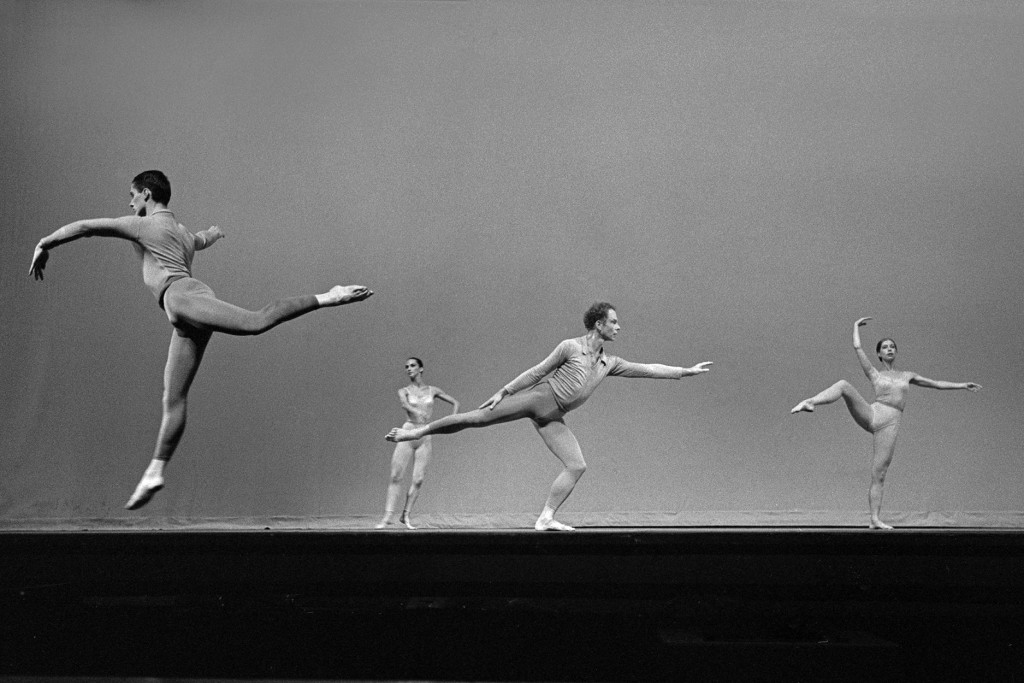
Information
Information
A frequent collaborator with John Cage, Robert Rauschenberg, and Nam June Paik, Merce Cunningham (1919–2009) created choreography that may be seen as a bridge between modern and postmodern dance. Cunningham wanted his work to be free of the self, ego, and memory. For him, the visual and aural experiences of seeing a choreographic work were more important than an emotional experience. In many of Cunningham’s works, including Suite for Five, which premiered on May 18, 1956, with music by Cage and costumes by Rauschenberg, stillness—an equivalent to the nothingness or silence of structural films—becomes a choreographic element of equal value to the movement itself. In the program notes for a 1957 performance, Cunningham explained, “No stillness exists without movement, and no movement is fully expressed without stillness.” Analogous to 4’33”, White Painting, and Zen for Film, in the absence of explicitly virtuosic choreography, the intentional stillness in Suite for Five offers an opportunity to recognize the experience of time involved in the viewing of a dance work. —LH
Image: © Martin Silver (1963) / Merce Cunningham Trust.